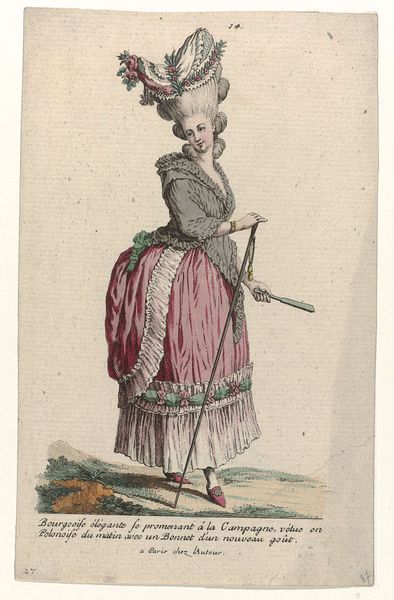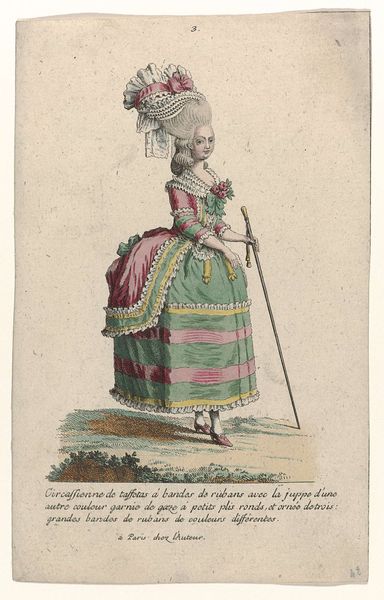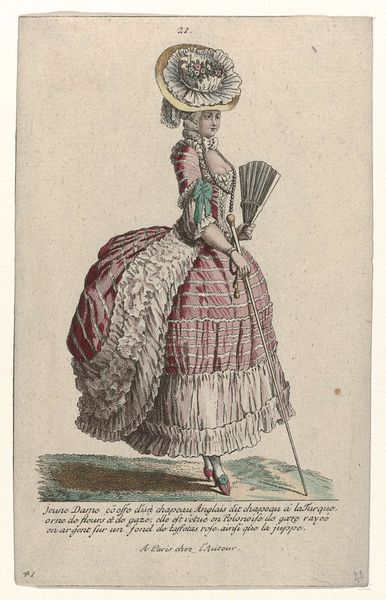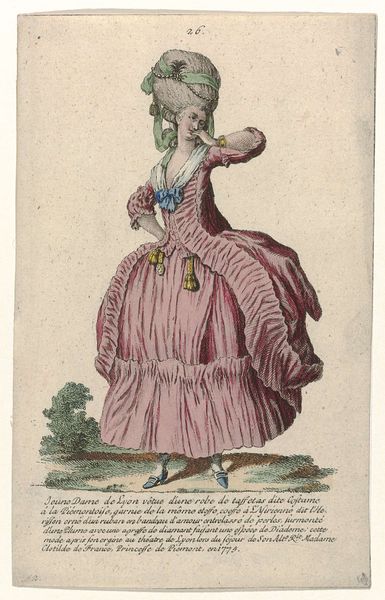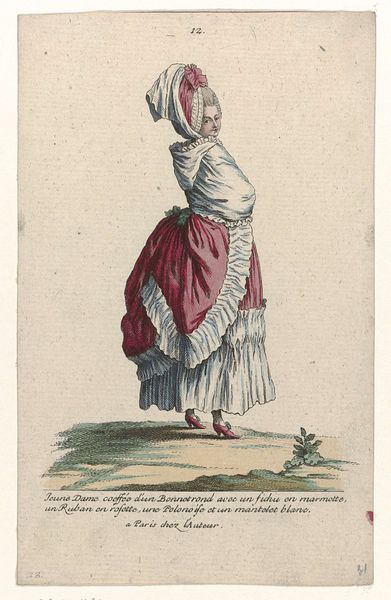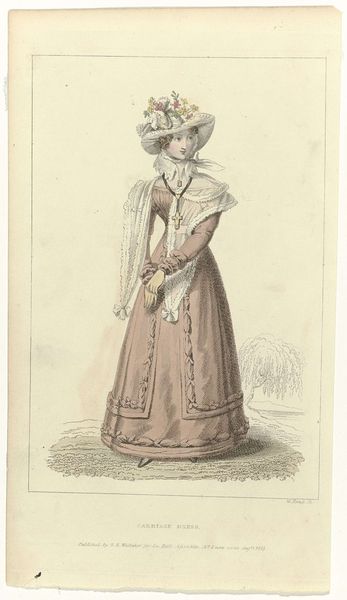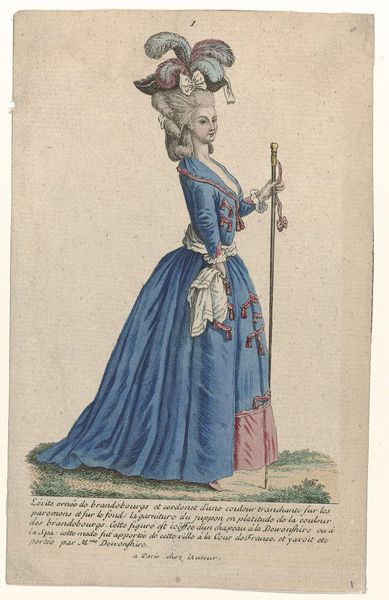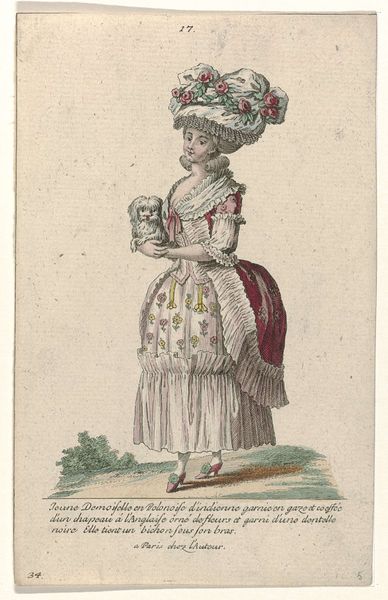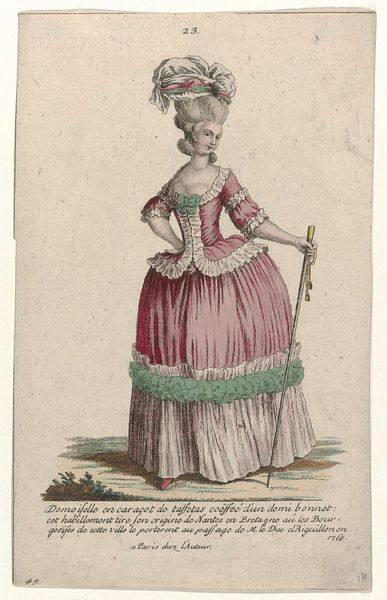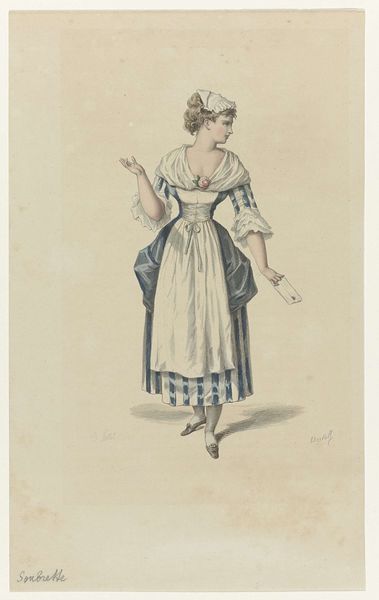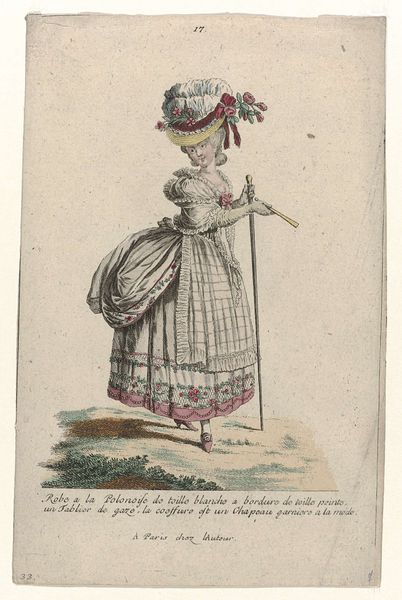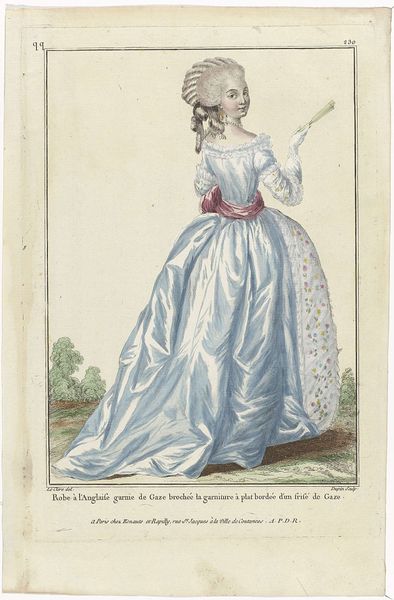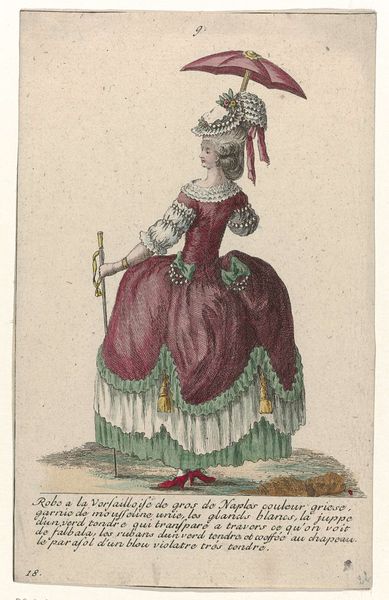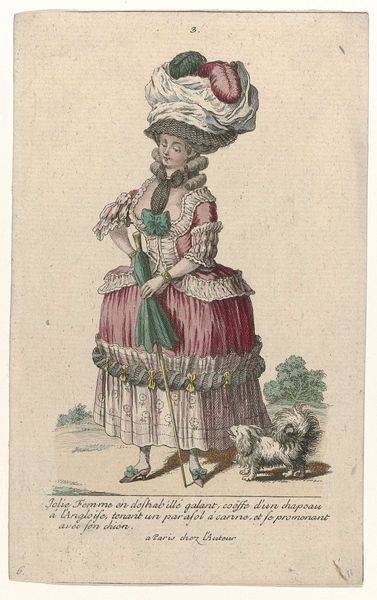
Gallerie des Modes et Costumes Français, 1785, nr. 19, nr. 37, Kopie naar G 40 : Femme de Qualité en Deshabillé (...) c. 1785
0:00
0:00
Dimensions: height 176 mm, width 111 mm
Copyright: Rijks Museum: Open Domain
Curator: What strikes me immediately about this piece is the almost aggressively ornamental quality of the subject's attire. The colors are soft, but the layers, the textures... it's quite overwhelming. Editor: Yes, it's very much in the Rococo style! This is a print titled "Gallerie des Modes et Costumes Français, 1785." It seems to be a copy, indicated as "Kopie nach G 40", depicting a woman of quality in undress, rendered in ink and watercolor on paper, dating to about 1785. The production of fashion plates like this one tells us so much about the material culture of the period. Curator: Undress! With that towering hat and those floral embellishments? The title itself is quite telling; what are we really seeing if not performative social status? Consider the labor involved in producing such garments, and disseminating such illustrations – think of the textile workers, the printing press operators... Editor: Precisely! These images were widely circulated, shaping aspirations and influencing fashion trends across social strata, not just among the elite depicted. The existence of a "Kopie," as the title suggests, reveals the print's importance for broader consumption. We see here a critical interplay between aristocratic taste and emerging print media markets, all fueled by the rise of consumerism. Curator: And let’s look at the specifics, shall we? The textile patterns in the skirt, seemingly block printed judging from the repetitive patterns; what dyes would have been used, what were the trade routes for acquiring these materials… These elements give weight to what would otherwise appear to be ephemeral. Editor: Beyond material processes, fashion was deeply entwined with politics. The French court meticulously controlled fashion, dictating trends to solidify their authority and maintain social order, while subtly adapting to new forms of bourgeois consumption. What’s considered tasteful evolves along distinct, ideological lines. Curator: I agree wholeheartedly. When analyzing garments we often fail to consider labor itself as a core component of materiality, therefore ignoring this, it is not an inert or merely decorative exercise but deeply connected with the making. Editor: Indeed, a single print invites so many pathways for interpretation. Thanks for highlighting those intersections. Curator: It's been a pleasure excavating these sartorial layers.
Comments
No comments
Be the first to comment and join the conversation on the ultimate creative platform.
